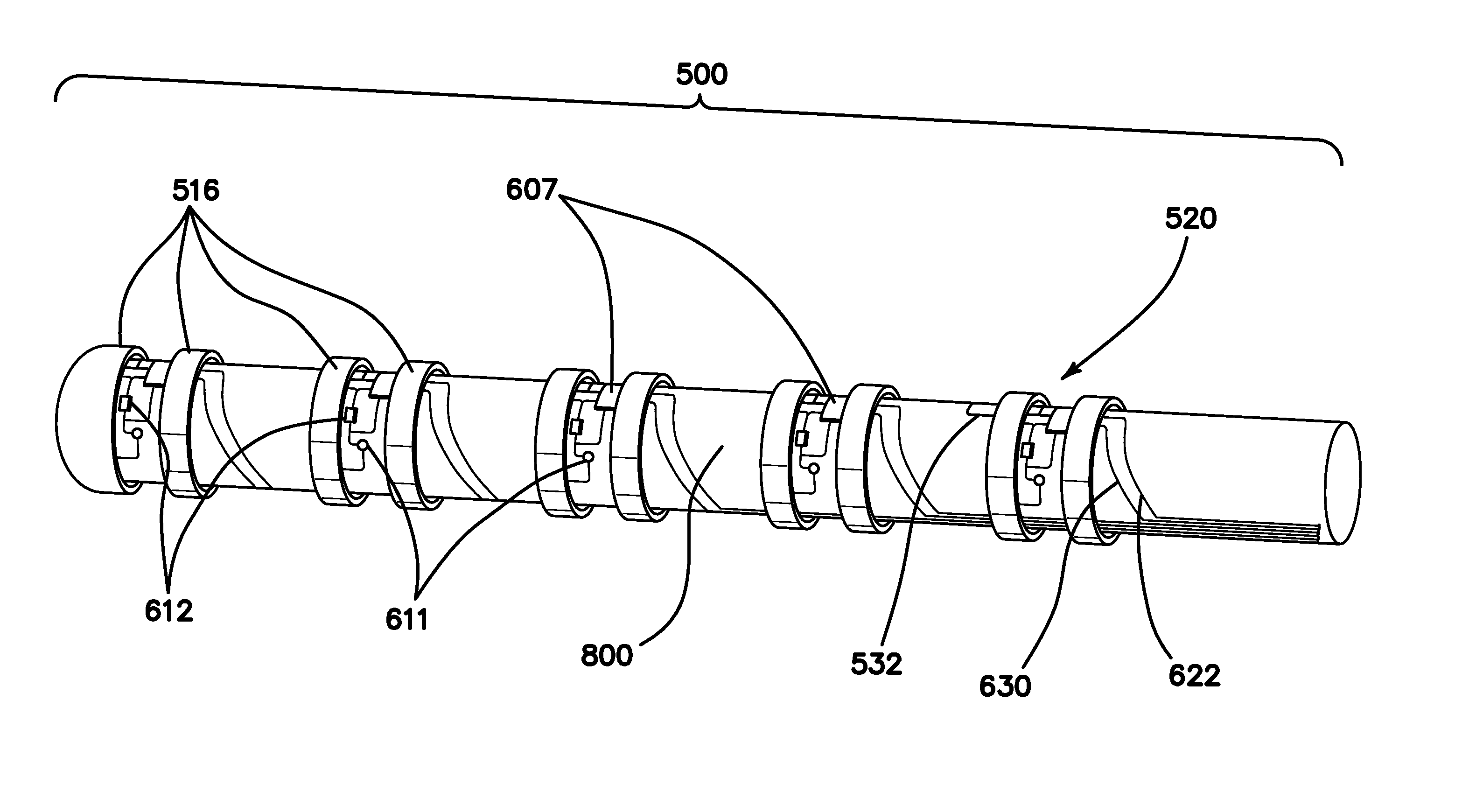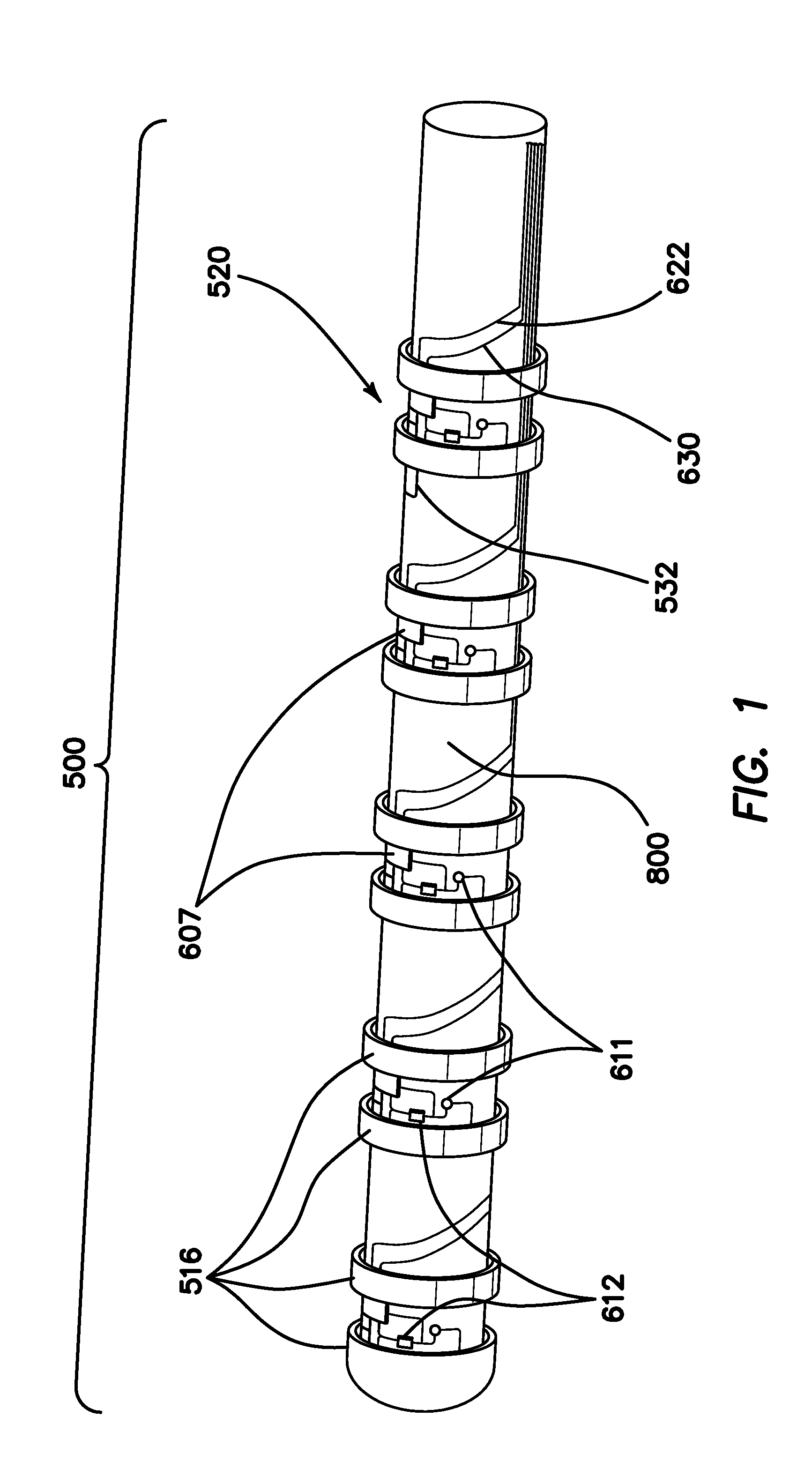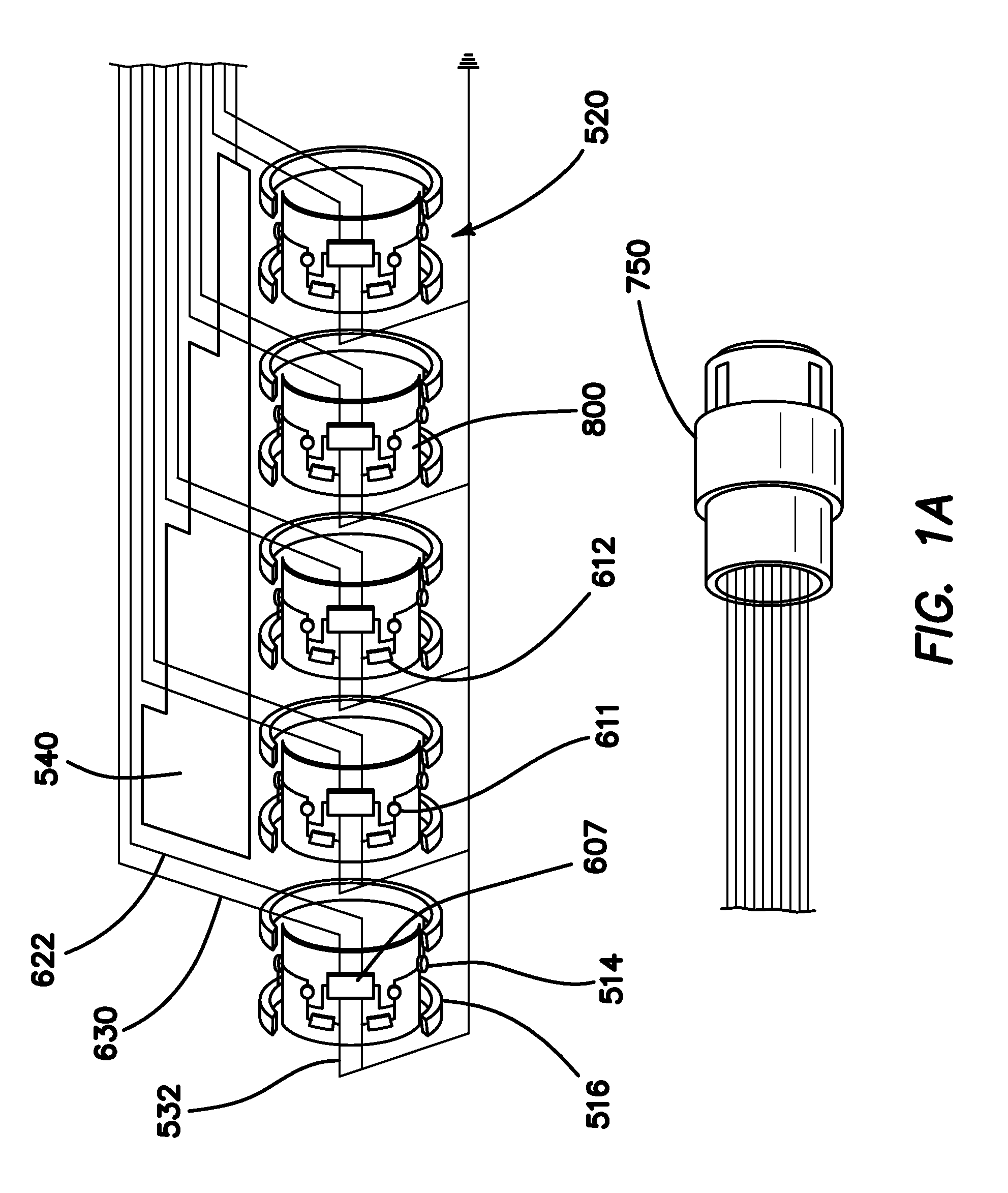Method and apparatus for measuring biopotential and mapping ephaptic coupling employing a catheter with mosfet sensor array
a technology of mosfet sensor array and biopotential measurement, which is applied in the field of methods and apparatus for navigating and recording electrical characteristics of electrophysiological signals, can solve the problems of increasing complexity of arrhythmias, increasing the difficulty of detecting ephaptic coupling, and presenting a major challenge, so as to improve the modeling of cellular electrical activity
- Summary
- Abstract
- Description
- Claims
- Application Information
AI Technical Summary
Benefits of technology
Problems solved by technology
Method used
Image
Examples
Embodiment Construction
[0071]FIG. 1 is an autographic representation of a decapolar catheter formed with the disclosed MOSFET Sensor Array 500 for measuring bioelectric potential for example, while performing electrophysiological studies within the endocardial tissue. The assembly is comprised of a series of typical electrode rings 516 shown in a decapolar configuration. This layout can be configurable in any combination suitable to those familiar with the art while employing the device while measuring bioelectric potential in a biological media or environment. Electrodes 1A 516 are coupled to a sensor module 520 including a capacitor C1A1611 and resistor R1A2612 which form an electrical unit coupled to a MOSFET 607. The discrete electronic components are mounted on a flexible substrate such as anisotropic conductive film (ACF), mechanically reinforced by the catheter structure 800 formed of polyurethane or silicone, etc. materials commonly used in such construction. The electrical circuit is formed with ...
PUM
 Login to View More
Login to View More Abstract
Description
Claims
Application Information
 Login to View More
Login to View More - R&D
- Intellectual Property
- Life Sciences
- Materials
- Tech Scout
- Unparalleled Data Quality
- Higher Quality Content
- 60% Fewer Hallucinations
Browse by: Latest US Patents, China's latest patents, Technical Efficacy Thesaurus, Application Domain, Technology Topic, Popular Technical Reports.
© 2025 PatSnap. All rights reserved.Legal|Privacy policy|Modern Slavery Act Transparency Statement|Sitemap|About US| Contact US: help@patsnap.com



